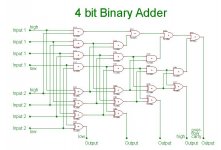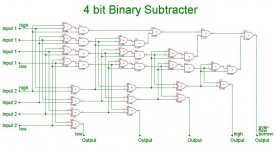per
Veteran Member
I recently made an 4 bit adder and a 4 bit subtracter out of TTL logics. They can be extended to as many bits you would like, and what I would like to know is if it will work (I haven't too much experience with TTL gates, but it looks like it is straightforward in one of my books).
I hope to some day make a whole processor and (a very primitive) computer system out of TTL logics one day...
Any comments?
I hope to some day make a whole processor and (a very primitive) computer system out of TTL logics one day...
Any comments?


